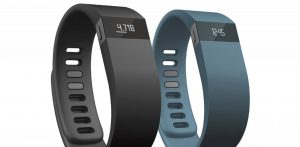 Photo leaks of the Fitbit smartwatch that is set to be unveiled in the near future have revealed that the device will closely resemble the Fitbit Blaze. The launch of the smartwatch, which sources say has been codenamed Higgs, has been delayed due to production issues.
Photo leaks of the Fitbit smartwatch that is set to be unveiled in the near future have revealed that the device will closely resemble the Fitbit Blaze. The launch of the smartwatch, which sources say has been codenamed Higgs, has been delayed due to production issues.
According to sources the upcoming Fitbit smartwatch will have some specifications that are similar to those of the second version of the Apple Watch. This includes a color display that has nits of brightness numbering one thousand. Other features include a battery life stretching to four days, deep integration with Pandora and therefore allowing the storage and playing of music.
Touchless payments
To accompany the smartwatch, Fitbit is also expected to unveil Bluetooth earbuds and these will resemble the Beats X earbuds made by Apple. These earbuds will be offered in two colors and they will be made to hang around the neck.
Design mishaps
The production issues that have plagued the Fitbit smartwatch include design mishaps. For example, the GPS feature at one time failed to work as the antennae wasn’t correctly positioned. This forced a complete redesign of the device leading to the delays. The Fitbit smartwatch also couldn’t reach full-waterproofing levels initially and this had to be worked on since it is a standard feature in other similar devices such as the second version of the Apple Watch. The feature has also been standard in almost all traditional watches.
App store
Software problems have also haunted the Fitbit smartwatch and this is understood to have led to Project Higgs having to settle for Pandora as the music streaming partner instead of Spotify. And while an app store had been planned for from the beginning and even announced by James Park, the chief executive officer of Fitbit, it now looks unlikely that it will be ready by the time the smartwatch launches in fall. Rather than an app store, the Fitbit smartwatch will instead launch with a couple of customized apps. This is the first time a Fitbit device is being designed exclusively in-house by the company’s industrial design team. Previously this aspect was outsourced.
